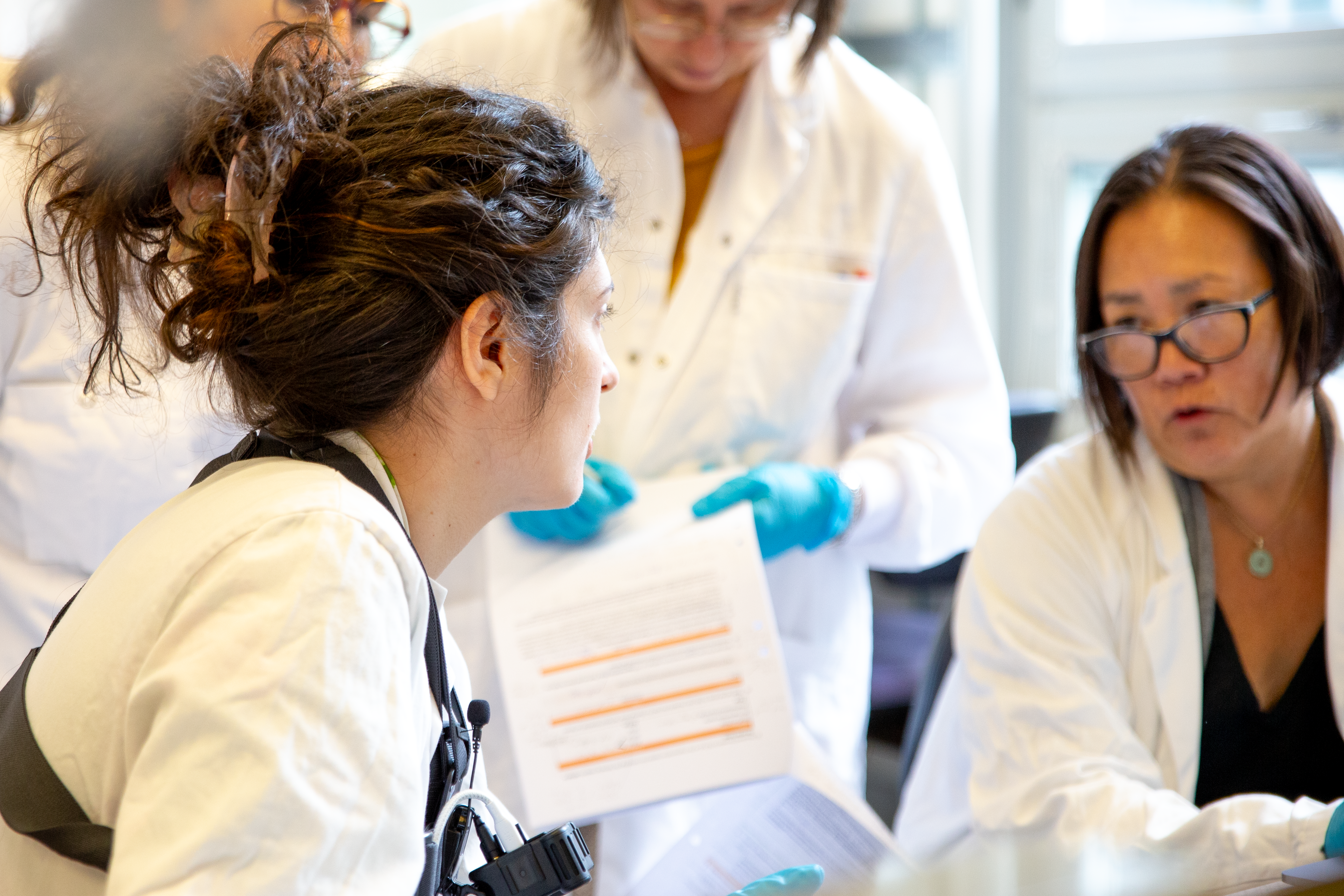AssemblyLink

In this course stream, Maria Gyftea (SciLifeLab, SE), Eunkyong Choi (SciLifeLab, SE), Laurie Bertrand (Genoscope, FR), Carmela Gissi (UniBari, IT), and Maria Laura Aguilera Gil (CNAG, ES) were led by expert instructor Lily Shiue from Dovetail (Cantata Bio) in the newly-released AssemblyLink protocol.
Filming was performed by Maria Gyftea and Lily Shiue.
- The course material is organized from sample preparation to results discussion to demonstrate the protocol, with extra videos of troubleshooting.
- Skip to the full course playlist section to watch the full AssemblyLink course!
Tissue preparation
Sample preparation was performed by each participant according to how they usually disrupt tissues.
| Preparation | Info | Runtime |
|---|---|---|
| Herring | Herring tissue was disrupted in a mortar and pestle on wet ice with addition of liquid nitrogen. | 8.5min |
| Reindeer heart | Reindeer heart tissue was disrupted in a mortar and pestle laying in liquid nitrogen. | 10min |
| Reindeer spleen | Reindeer spleen tissue was disrupted in a mortar and pestle laying in liquid nitrogen. | 7.5min |
| Krill | The small krill sample was disrupted in a mortar and pestle laying in liquid nitrogen. | 7min |
| Moose | The moose sample was preserved in ethanol. It was washed in PBS and disrupted in in a mortar and pestle laying in liquid nitrogen. | 7min |
Sample preparation for lichens, worms, algae, sponges, and insects can be found in the Challenging Sample Preparation.
Lysate preparation
Sample preparation - crosslinking and creating a lysate from the samples. Maria Gyftea demonstrates this step of the protocol on the krill sample, including discussion with Lily. Runtime: 17 minutes.
Lysate QC
Lysate QC - a quality control step is performed on all samples in order to check lysate concentration and quality. The lysates are found to have very low yields. Runtime: 15.5 minutes.
Discussion of QC Results - lysates are run on the Bioanalyzer to determine the quality of the lysate, and found to be underdigested. Runtime: 4 minutes.
Proximity Ligations
Chromatin Capture - While Lily repeats sample preparation with higher input, the herring and reindeer spleen samples are chosen to proceed. In the first step, chromatin capture is performed. Runtime: 4.5 minutes.
Proximity Ligations - the three ligation reactions and the crosslinking reversal are performed. Runtime: 11 minutes.
DNA Purification - the DNA is purified from the sample lysate. Runtime: 7 minutes.
Library Preparation
Library Preparation - library preparation is performed on the herring and reindeer spleen samples from the first round. The protocol is performed up until the Index PCR stage, at which point the samples were stored for further analysis. Runtime: 8.5 minutes.
Troubleshooting and additional attempts
Discussion of Results 2 - The results of increasing input are not promising, as the samples are still underdigested. The group discusses possible additions and controls. Runtime: 8 minutes.
Sample Preparation 2 - A third attempt is performed on the herring and reindeer spleen tissues with the inclusion of the cell isolation module. Additional controls and discussion is included. We recommend watching the first sample preparation video first! Runtime: 24 minutes.
Lily Shiue, presenting the AssemblyLink HiC lab results - Presentation of the AssemblyLink results to all course participants, including discussion. Runtime: 8 minutes.
Data
All samples from this course are undergoing troubleshooting.
Full AssemblyLink HiC Playlist
Citation
The AssemblyLink protocol used in this course is © 2024, Cantata Bio, LLC. All rights reserved.
The video materials from this course are available for reuse under ![]()
Please cite the course material as:
Lily Shiue, Maria Laura Aguilera Gil, Laurie Bertrand, Eunkyong Choi, Carmela Gissi, Maria Gyftea, Ave Tooming-Klunderud, Olga Vinnere Pettersson (2025). Biodiversity Genomics Europe and SciLifeLab AssemblyLink HiC Course. Retrieved from https://scilifelab-training.github.io/BGE-HiC-Course/module3.html